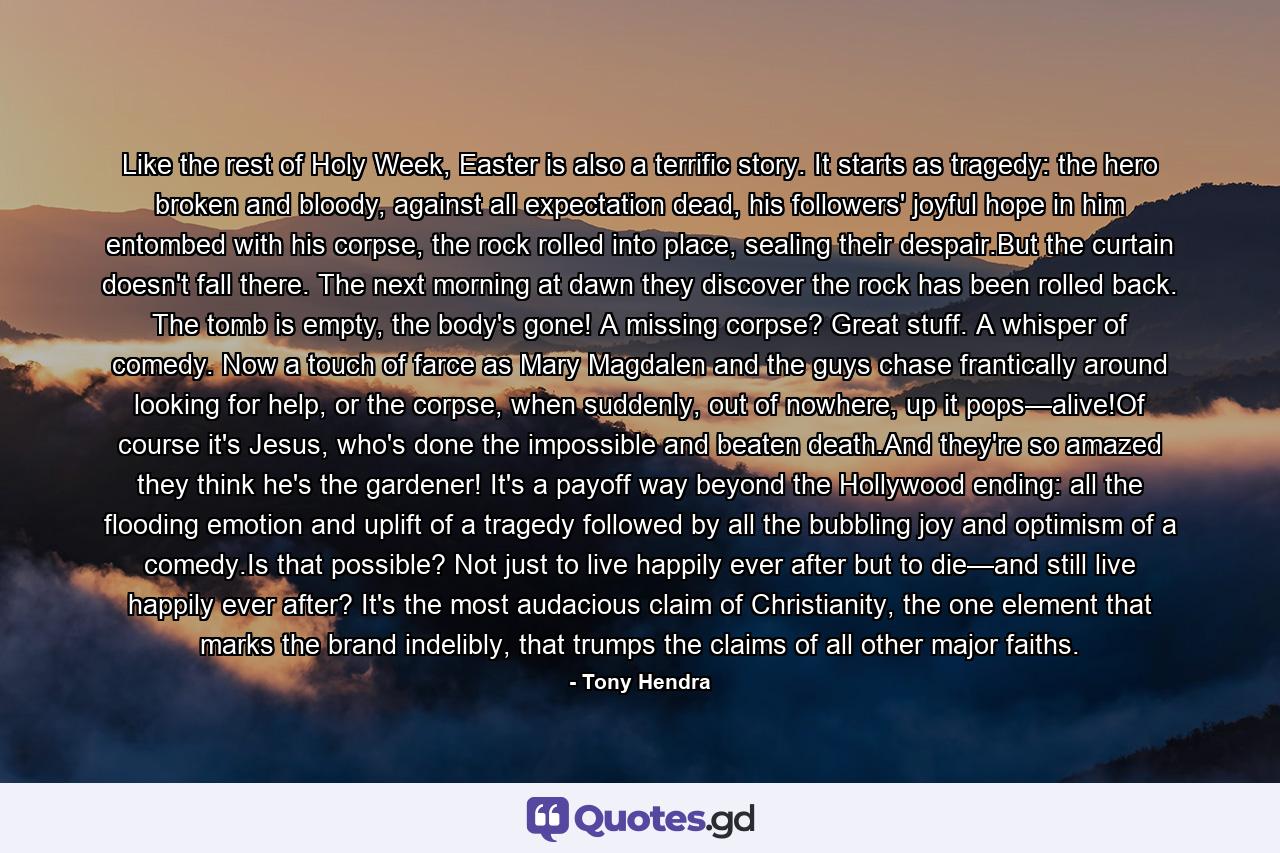Like the rest of Holy Week, Easter is also a terrific story. It starts as tragedy: the hero broken and bloody, against all expectation dead, his followers’ joyful hope in him entombed with his corpse, the rock rolled into place, sealing their despair.But the curtain doesn’t fall there. The next morning at dawn they discover the rock has been rolled back. The tomb is empty, the body’s gone! A missing corpse? Great stuff. A whisper of comedy. Now a touch of farce as Mary Magdalen and the guys chase frantically around looking for help, or the corpse, when suddenly, out of nowhere, up it pops—alive!Of course it’s Jesus, who’s done the impossible and beaten death.And they’re so amazed they think he’s the gardener! It’s a payoff way beyond the Hollywood ending: all the flooding emotion and uplift of a tragedy followed by all the bubbling joy and optimism of a comedy.Is that possible? Not just to live happily ever after but to die—and still live happily ever after? It’s the most audacious claim of Christianity, the one element that marks the brand indelibly, that trumps the claims of all other major faiths.
